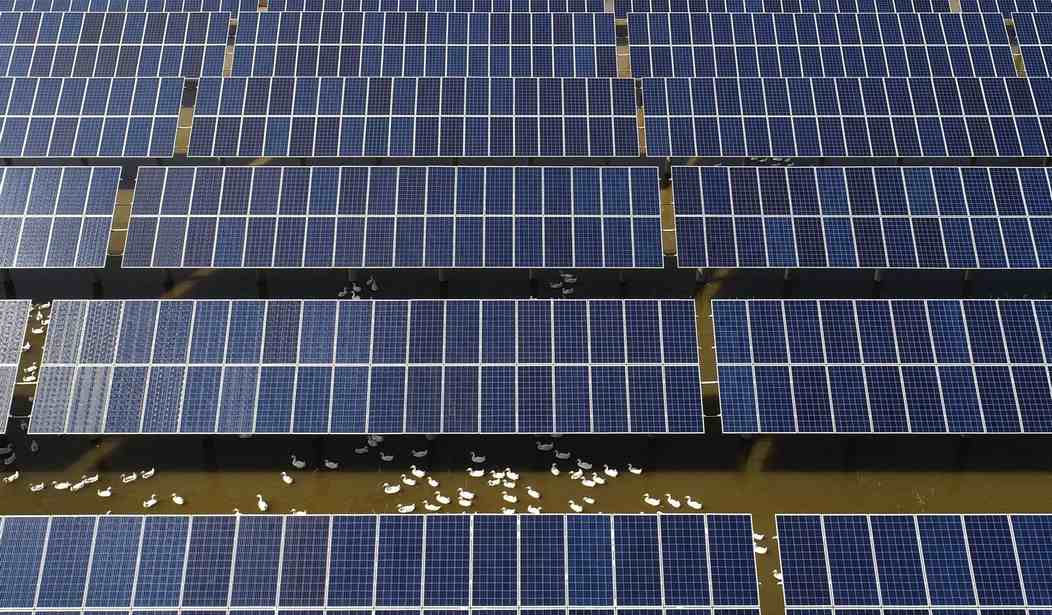Two recent sets of headlines left me scratching my head for answers.
The first, from the Export-Import Bank on June 1, provides details regarding a boast President Biden made in his recent speech to the League of Conservation Voters: “Export-Import Bank of the United States Approves More than $900M for Solar Energy Project in Angola.”
Not only will the giant solar farm “provide access to clean energy resources across Angola,” said the bank, it will also help “Angola meet its climate commitments.”
Now this headline reminded me of one from two years ago: “U.S. approves massive solar project in California desert.” Angola, I learned, while fairly close to the equator, has temperatures that rarely exceed the low 90s (Fahrenheit). By comparison, the average high temperature in Blythe, California (the nearest city to the solar farm) is well above 100° F from June through August. In the desert itself, the numbers may be even higher – much higher for the panels themselves.
This matters why, you may ask?
That’s the second group of headlines.
On June 17, the European Conservative related that,“Britain Turns to Coal Because It’s Too Hot for Solar Panels.” Yes, well, the article further notes that “providers had no choice but to start burning coal again” because “there wasn’t enough wind to allow for a good turbine output and it was too hot for solar panels to work efficiently [emphasis added].”
Then I happened upon two earlier stories. On June 12, a headline from the Canadian magazine Western Standard asserted, “BLIMEY! UK fires up coal power after solar panels wilt in record breaking heat.” The article notes that temperatures in Blighty broke 30° C (a whopping 86° F), pushing up demand for power from a reopened nearby coal-fired power plant that only the Russian war in Ukraine had kept from being decommissioned.
Recommended
It was The Telegraph that provided the rationale for “outing” solar’s high-temperature failures. Apparently, in the UK at least, solar panels are tested at a benchmark of 25° C. For every degree rise in the temperature of the solar panel (not the air) above that level, the efficiency of the solar panel is reduced by 0.5 percent.
In direct sunlight, Alastair Buckley, professor of organic electronics at the University of Sheffield explained to the Telegraph, as the cell temperature rises to 60° C or even 70° C (158° F), “compared with a cool cloudy day, the cells might be a maximum of 25 percent less efficient.” After dark or on heavily overcast days, the reduction in solar output is much higher.
The Western Standard added that, “It all comes down to the Law of Thermodynamics.” When temperatures soar, electrons can bounce around too much and reduce voltage, or the amount of electricity generated. The Canadians cited San Diego-based CED Greentech, America’s largest solar provider, which confirmed Buckley’s statements.
According to CED Greentech, “As the temperature of the solar panel increases, its output current increases exponentially, while the voltage output is reduced linearly. In fact,” they said, “the voltage reduction is so predictable that it can be used to accurately measure temperature.”
I went back and looked at the ExIm Bank press release, which promised “over 500 megawatts of renewable power” per day [at an unspecified cost to consumers]. I wondered, “Is this rated power or real numbers? And what happens at night?”
And, oh yeah, Los Angeles alone uses nearly 8,000 MW/day – or 22,000 gigawatt-hours annually.
Robert Bryce, in his “Let Them Eat Solar Panels” commentary on the ExIm Bank largesse, points out that over 60 percent of Angola’s 32 million people have zero access to electricity and that the former Portuguese colony (and reputed chief supplier of slaves to the Americas) has not made any “climate commitments.”
On the other hand, noted Bryce, ExxonMobil is considering a $15 billion investment to develop a new offshore oilfield in the oil-rich nation that already exports 47,000 barrels per day to the U.S. Angola also produced 11.3 billion cubic meters of natural gas in 2020, up from 1.9 billion cubic meters as recently as 2016.
But I digress. Reuters reports that the $550 million Crimson Solar Project, on 2,000 acres of federal land west of Blythe, was built on land designated for renewable energy development by the Desert Renewable Energy Conservation Plan.
The Biden administration claimed the solar farm would power 90,000 homes thanks in part to a battery storage system. But the contractor (Sonoran West Solar Holdings) called it a 350 MW facility with an additional 350 MW battery storage system that will power only 47,000 homes on average each year.
Was the Biden administration padding the numbers?
Is Sonoran tacitly admitting solar only provides electricity at best about half the time?
Do these numbers factor in the admitted shortfalls in output on hot sunny days (of which there are plenty in the desert)?
Does California even have a plan for making up the shortfalls at night, on cloudy or very sunny days, or during unscheduled maintenance (say, after a windstorm covers the panels with dust)?
And, finally, if solar panels become increasingly inefficient as the temperature of the solar panel increases, just how much excess capacity would have to be installed (and how much backup power would have to be in reserve) to ensure a routine flow of power to end users both day and night in summer and winter?
Merely asking these questions is “outside the bounds of propriety” to those without answers.
But aren’t we the ones who pay the bills and the ones who suffer from inadequate planning?
Duggan Flanakin is a senior policy analyst for the Committee for a Constructive Tomorrow and a frequent writer on public policy issues.

























Join the conversation as a VIP Member